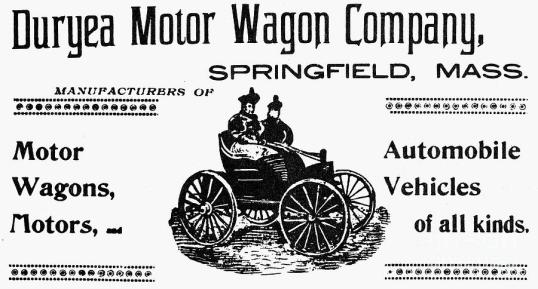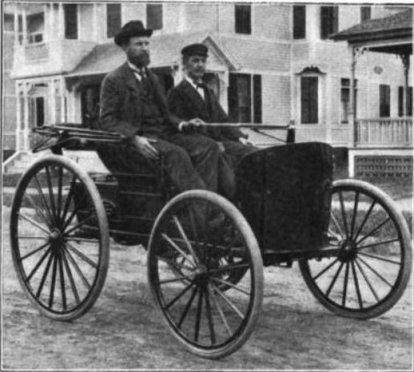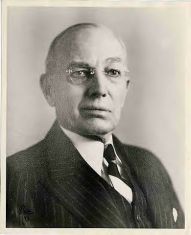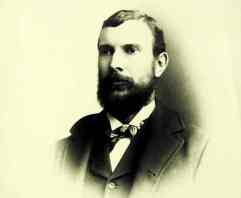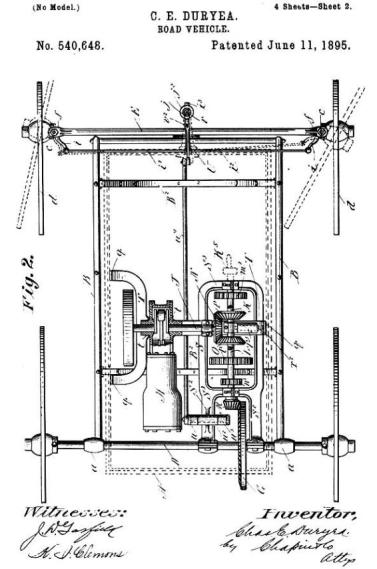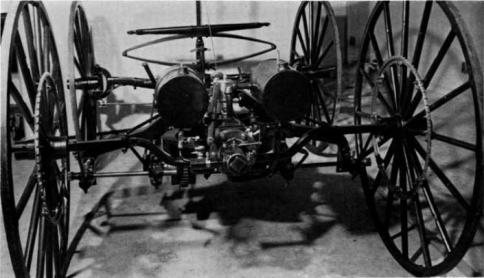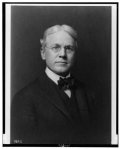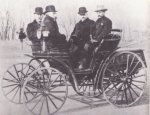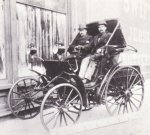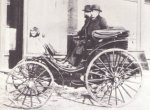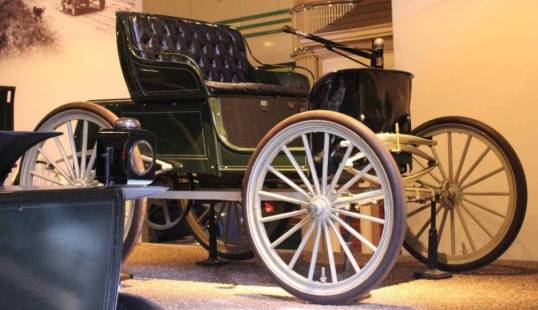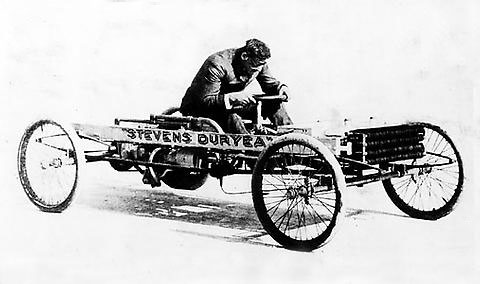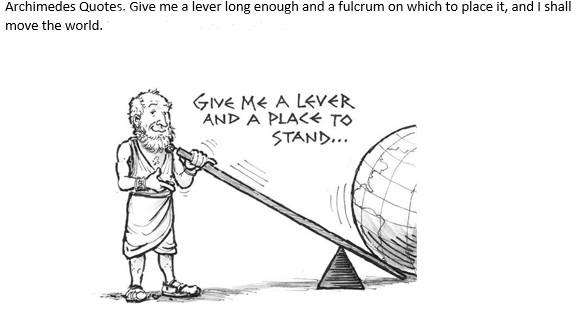First America Automobile – The Duryea Motor Wagon
October 8, 1869: Frank Duryea Born, Inventor of First American Auto
Charles and Frank Duryea invented the first gas-powered automobile in America. Charles had the vision to get the idea off the ground, Frank had the diligence to see the project through to completion. Frank did 100% of the mechanical work and changed most of Charles’s original design. It is more accurate to say that Frank Duryea invented the first gas-powered automobile in America.
When Duryea was just 24 years old, he and his older brother, Charles, designed and built the Duryea Motor Wagon, one of the first successful gas-powered motor vehicles in the United States. The two brothers researched the internal combustion engine at the Springfield public library. Charles drew the designs then went back to Illinois to follow other pursuits.
Frank worked ten hours a day to make Charles’s design a reality. Over the course of four road tests, Frank changed those designs in significant ways. By trial-and-error, Frank worked out problems of ignition, carburetion, and transmission. He devised a method of muffling the engine’s extreme noise with a wooden box.
Frank Duryea was the first automobile driver on the American road. In September 1893, he was behind the wheel as the Duryea car made its first successful trip, 600 yards down his street in Springfield, Massachusetts. When he tried to turn the corner, the Motor Wagon’s transmission blew; however Frank managed to patch it back together and putter down the road for another half-mile or so.
In September 1895 the two brothers organized the first car company in the United States, the Duryea Motor Wagon Company, to build and sell their gas-powered contraptions. On Thanksgiving Day of that year, in a brilliant promotional stunt, Frank won the country’s first automobile race, the Chicago Times-Herald race from Chicago to Evanston.
The Big Race
On November 28, 1895, Frank Duryea won the first motor-car race in the United States, a 54-mile loop along the lakeshore from Chicago to Evanston and back again. The race was a harrowing one–it was held during one of Chicago’s great snowstorms, two of the contestants became comatose from exposure to the cold, and the contestants’ cars got stuck in snowdrifts, slid into other vehicles, and stalled repeatedly.
Duryea, who completed the race in 10 hours and 23 minutes, traveled at an average speed of 5 1/4 miles per hour.
Herman H. Kohlstaat, the publisher of the Chicago Times-Herald and a tireless booster of the newfangled automotive technology, decided to drum up interest in the motor wagon by sponsoring a race. More than 80 people entered, most of whom were building their own cars at home; as a result, the event had to be postponed twice because the vast majority of the racers weren’t yet ready.
Only two people made it to an exhibition race at the beginning of November: Frank Duryea of Springfield, Massachusetts, driving a “buggyaut” and Oscar Mueller of Chicago, driving his father’s imported Benz. Mueller won the race; Duryea had swerved to avoid a farmer’s wagon and had fallen into a ditch.
On the morning of November 28, six inches of snow covered the race-course. A horse-drawn snowplow inched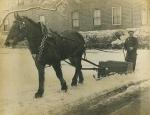 along ineffectually. Because of the bad weather, only six of 89 racers had made it to the starting line: Duryea; Mueller; a Benz sponsored by Macy’s that the store hoped would help it to advertise the cars it had begun to sell; a Benz sponsored by the De La Vergne Refrigeration Company of New York; and two electric cars whose batteries died almost immediately.
along ineffectually. Because of the bad weather, only six of 89 racers had made it to the starting line: Duryea; Mueller; a Benz sponsored by Macy’s that the store hoped would help it to advertise the cars it had begun to sell; a Benz sponsored by the De La Vergne Refrigeration Company of New York; and two electric cars whose batteries died almost immediately.

Winner of America’s first motor vehicle race Frank Duryea at the left at the tiller, and umpire Arthur W. White of Toronto beside him
Ten hours and 23 minutes after the race began, the Duryea wagon sputtered across the finish line, finishing first.
Meanwhile, according to news accounts, the Mueller moto-cycle “puffed its way slowly and laboriously along, its pneumatic tires wrapped with twine to keep them from slipping, and one of its operators sanding the belt on the motor for the same reason.” It crossed the finish line an hour and a half after Duryea had–though Mueller himself, who had fainted from all the excitement, was no longer at the wheel.
The Macy’s Benz was perhaps the most hapless racer of all: It collided with a streetcar on the way to Evanston and with a sleigh and then a hack on the way back, and never did finish. Neither did the De La Vergne Benz.
But the race had accomplished what Kohlstaadt had hoped it would: It introduced Americans to the motor-wagon and proved once and for all that the days of the horse and buggy were numbered.
For his part, Frank Duryea returned to his shop in Massachusetts and got to work. In 1896, the Duryea’s built 13 cars by hand–and thus they became the largest automobile factory in the United States.
Among those inspired by the Duryea was Henry Ford, who called it a “masterpiece” and credited the brothers with starting the automotive industry.
Frank left the Duryea Motor Wagon Company in 1899 and two years later he helped start the Stevens-Duryea Company, another auto manufacturing concern in Chicopee Falls, Massachusetts. He retired in 1915 and spent the rest of his days living comfortably in Connecticut, traveling, gardening and puttering around his workshop.
